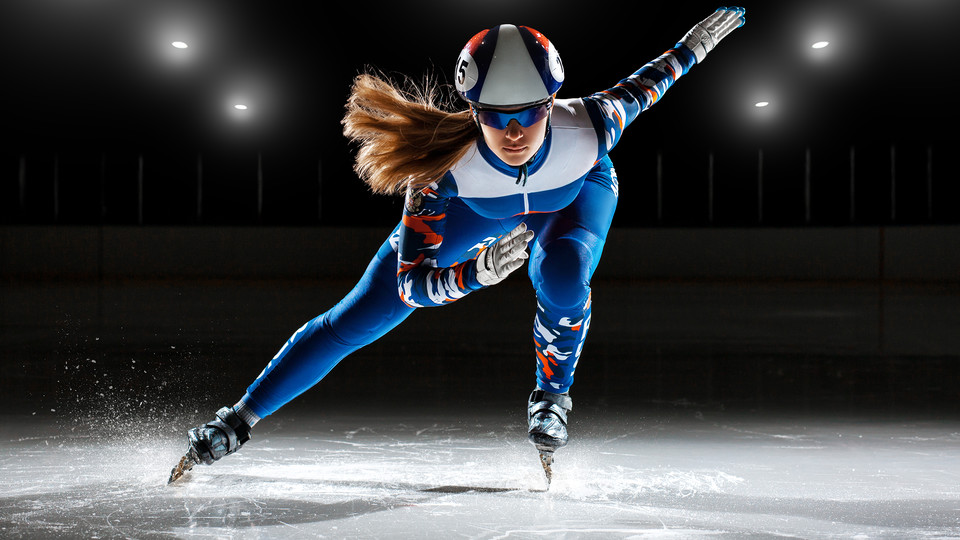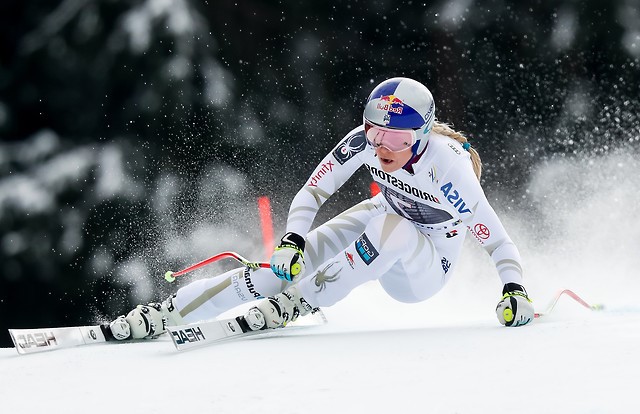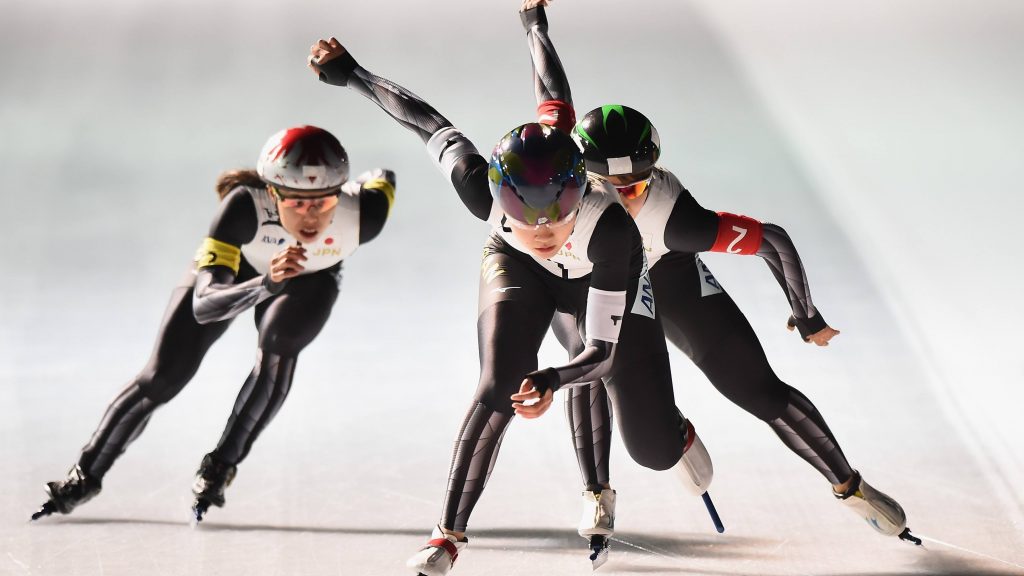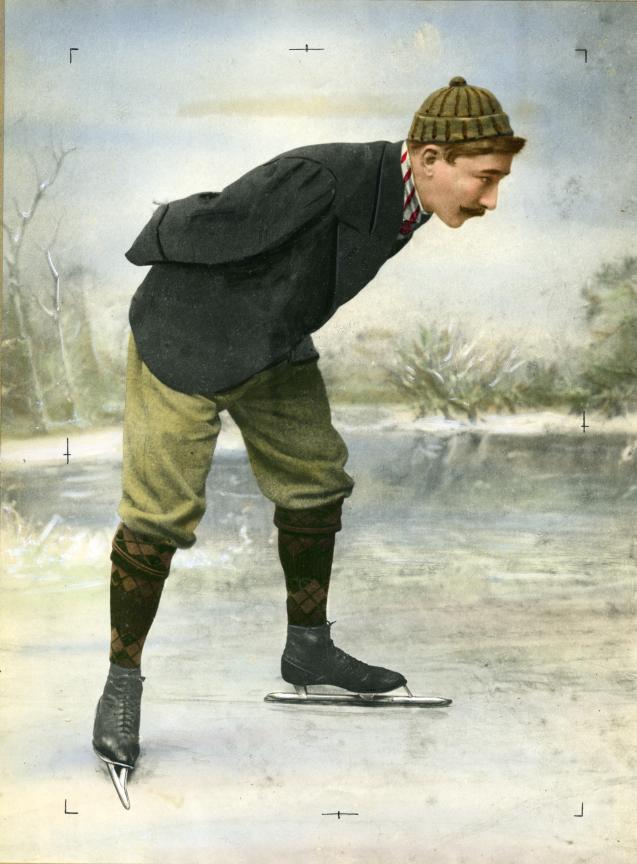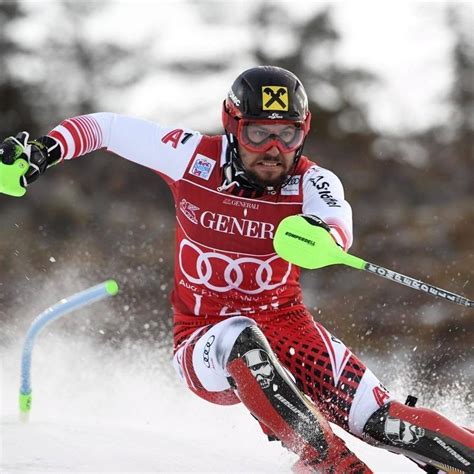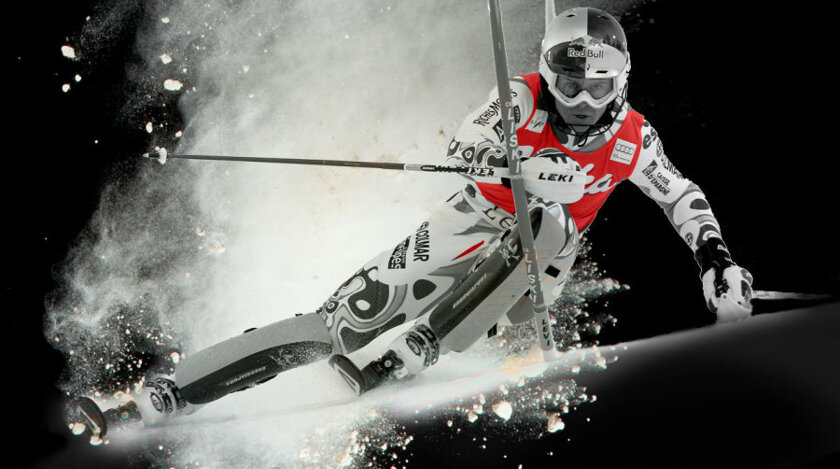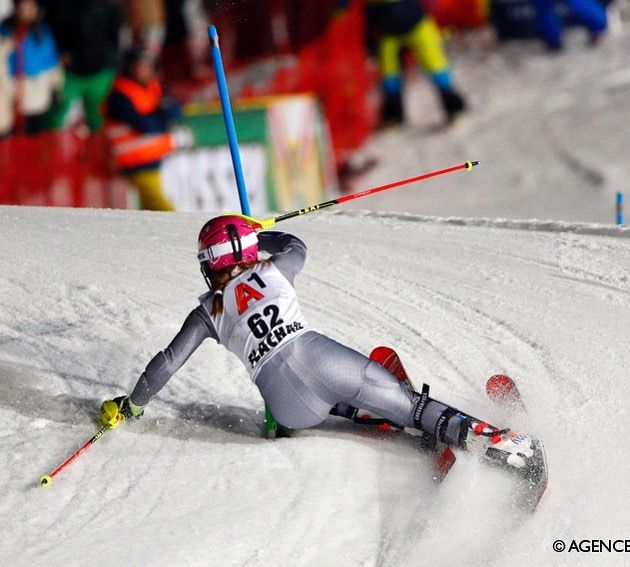When I first noticed that the dreaded stemming and heel pushing had stopped it was after working on changing body management to remove facing the chest and shoulders downhill. The difference is very clear and consistent permitting better extension of the outside leg and better dynamics altogether.
In the first video scene the stance is still crouched and the arms drawn into the body and too low down. When we get to the third scene you are standing up the arms are opening up and the dynamics are clear – if not just a bit too much being led by the shoulders. The only criticism at this point is to be able to choose to remain flexed at the hips even at complete leg extension – however that is a choice.
Overall the goals for 3x3hr sessions of the mountain have been achieved and this shows remarkable openness on John’s part because most people with those issues in skiing go the opposite way and become completely entrenched.
Speed Skating Elements
The key moment in eliminating the stem appeared to take place when we worked on principles derived from observing speed skating. We had already established that the outside hip is pulled back (counter rotation) during the turn progression while the upper body follows the skis. This is really simplified as a skating action – if you know skating!
…but now we added something extra in that the upper body – while tilted forward would rotate on the axis of the spine slightly in the direction of the turn centre – using all of the lumbar vertebrae up to the 12th thoracic vertebra at the rib cage. Of course the upper body won’t appear to rotate on this axis or be active to a viewer but will give the illusion of just being held horizontal (skater). This actively engages all the core muscles – not just the postural reflex of the lower abdominal muscles as is achieved by preventing unwanted hip rotation – i.e. pulling the outside hip backwards into its skating stance.
